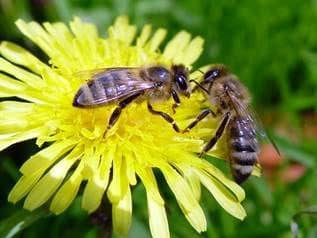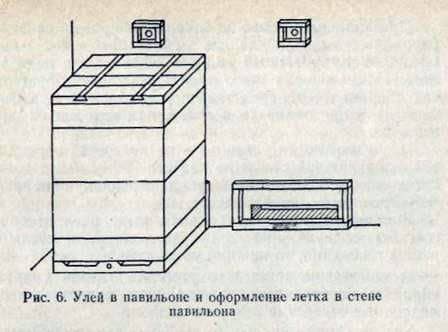
There are recommendations on the need for full pumping of honey from the nest. There was even the term “May drying of the nest”, which allegedly contributes to honey collecting activity of bees.
If you follow this recommendation, then, having insufficient stock of old food, the beekeeper in May-early June (the period when bees must consume the maximum amount of nutrition for their development and feed full-fledged brood) dooms bees to a half-starved existence. And aggravate it can unfavorable weather conditions with the termination of a honey collection.
The activity of the bee family is determined not by the absence of honey in the nest, but by the presence of honey and free honeycombs in the hive. The latter is achieved by timely expansion of the nest with the mandatory preservation of the required minimum of honey reserves in the nest, especially in the period responsible for the development of the family.
The beekeeper must follow the simple rule: in a beehive with bees should be at least 16 kg of honey throughout the year. Only in this case, and in the presence of pergia, the uterus does not limit oviposition, the brood receives full nutrition, and the bees grow large and workable.
Thus, to accommodate honey, 6-8 honeycombs with an area of 435 X 230 mm in the brood portion of the nest are required. The total amount of pergia should be equal to 1.5-2 frames.
With the ability of the Carpathian uterus to lay 1800-2000 eggs per day, before the release of brood and re-release, it needs 38 000-42 000 cells. Taking into account the omissions and the need for preliminary preparation, the number of cells required for egg laying increases to 47 000-52 000. And since one honeycomb with the size of 435×230 mm contains 6350-6500 cells, of which the uterus takes up to 5000-5500 in spring, the family needs brood 10 -11 cells.
For the brood brood (taking into account the building frames), another 1.5 honeycombs are needed. About 1-1.5 honeycombs (total) occupy the transitional and unsuitable for oviposition cells. Recent research and observations have shown that bees need a free cell cell at the bottom of the nest to rest.
Only the brood nest in the period of maximum oviposition of the uterus should have at least 20-24 honeycombs in the size of 435×230 mm, provided that the delivery of nectar by bees is equal to its consumption by them.
Nectar, brought by bees, is processed into honey for 5-6 days and takes initially 6 times more cells than honey. Hence, for processing 1 kg of nectar and placing the ripe honey for 6 days, bees need 3.4 honeycomb size 435 X 230 mm. And if there is 2 kg of nectar per day, then in 5 days the bees will occupy about seven such honeycombs. With honey collection of 4 kg per day in 5 days by injection and partially processed nectar will be employed 14 honeycombs. In order to exclude honey losses, the bees have to put another body on the 4th day.
During the harvest, the rule should apply: “It is better to have an extra store or body than a shortage of one honeycomb”. Conclusion: the family in the period of maximum development should be given two 10-12-frame enclosures for the brood nest and, at least, a hull, and under favorable conditions for collecting honey and more. The abundant honeycomb makes you add new cases, but not when the bees fill the previous one, and when almost all cells of the honeycombs of this body appear an injection.
These buildings should be provided with a full set of honeycombs, that is, a family must have at least 30-36 honeycombs with honey collection up to 2 kg and not less than 40-45 honeycombs with honey collection more than 2 kg per day.
The calculation shows that the brood nest of the most widespread 12-frame Dadan-Blatt hive with a frame of 435×300 mm is at least 50% less than necessary for the normal development of the bee family. This is something that does not allow bees in such hives to ensure the productivity of more than 18-20 kg of marketable honey.
The need to use large-volume beehives increases when it is required to exclude the swarming of families, and the selection of honey should be made once at the end of the season. The latter guarantees maturation and high quality of honey, while with multiple pumping of partially sealed honey (from small volume hives), it will contain an increased water content and a small amount of biologically active substances. After all, the processing of unsealed honey by bees was not completed.

Мед в кондитерской изделия. Что делать с опоношенными рамками.
Contents of bees in the pavilion